Dolby Vision on the LG G6: Why it’s not just another cheap gimmick
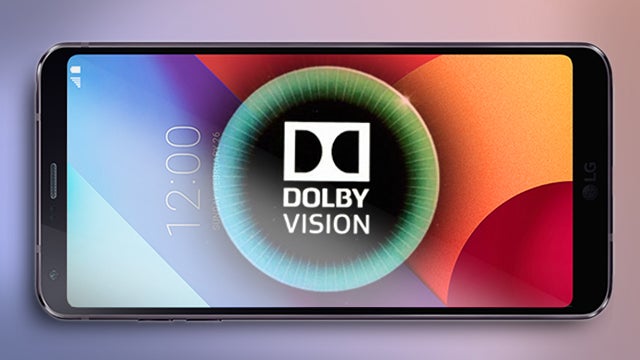
The LG G6 is the first phone to support Dolby Vision, the picture-enhancing technology that promises a more immersive image. But is it really necessary on a mobile display? How effective is it? And how does it work? We take a look.
After the obligatory cavalcade of leaks, the LG G6 was finally made official at this year’s MWC, and LG was keen to play up the capabilities of the new 5.7-inch display. So enthused were the LG execs that they rounded up an Oscar-winning Italian cinematographer, and even a Penn State professor, to extol the virtues of the new device’s screen and ergonomics.
Aside from introducing a new 18:9 (or 2:1) aspect ratio, the G6’s display also comes with support for Dolby’s image-enhancing technology, Dolby Vision. It’s a nice addition to the redesigned (farewell, modules) LG flagship, but is it really all that important on a mobile device? Or is this just a marketing gimmick?
Well, as it turns out, not entirely. In fact, it’s one of the phone’s most intriguing features, even if it’s nothing revolutionary, and there are several reasons why you should take notice.
I had a chance to get hands-on with the G6 at Dolby’s MWC stand, where VP of Image Product Management at Dolby Laboratories, Torsten Fink, talked me through the benefits of Dolby Vision on mobile. Here’s what I learned.
Related: Hybrid Log Gamma – why it’s the next big thing
Dolby Vision on mobile
You may have heard about Dolby Vision and HDR (high dynamic range), but at this point, you’re probably wondering whether there’s any difference between the two and just how the two technologies will affect mobile devices.
Of course, Dolby Vision is usually mentioned in relation to HDR TV and cinema, and if you want a full overview of the technology in that sense, you can check out our complete guide to Dolby Vision. But in short, it enhances images by allowing for increased brightness, more natural colours, and higher levels of detail. The big rival to Dolby Vision, HDR10, provides similar image-optimisation benefits, but lacks the extra information, known as ‘metadata’, which allows Dolby’s alternative to provide a more adaptive, and theoretically better, viewing experience. 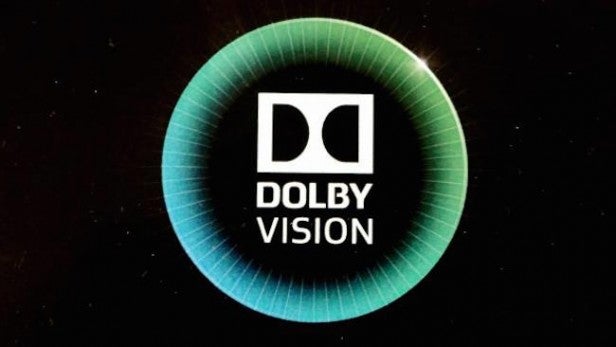
And while both HDR10 and Dolby Vision are set to become increasingly popular in the AV world, just how the rise of these two innovations will affect mobile is a bit more uncertain. The LG G6 is the first phone to offer Dolby Vision support, but what does that actually mean? Well, as with TV and cinema, it means – at least in theory – you’ll get improved images. But there’s more to it than that.
As Torsten Fink told me at Dolby’s MWC event: “With HDR10 you cannot achieve a consistent experience between devices, because it doesn’t have all the information that controls the mapping process. So when you have HDR10 devices next to each other, they will all look different. That’s the biggest difference [between HDR10 and Dolby Vision] from a consumer perspective.”
On the G6, Dolby says its technology is provided entirely through software, which automatically kicks in when you start watching Dolby Vision-enabled content (of which there’s an increasing amount on Netflix and Amazon Prime Video). As the image upgrades are delivered through software, it means Dolby is able to take devices that might not have the best hardware and make the picture on their screens look closer to how the creator of the content intended.
Related: LG G6 vs Galaxy S8
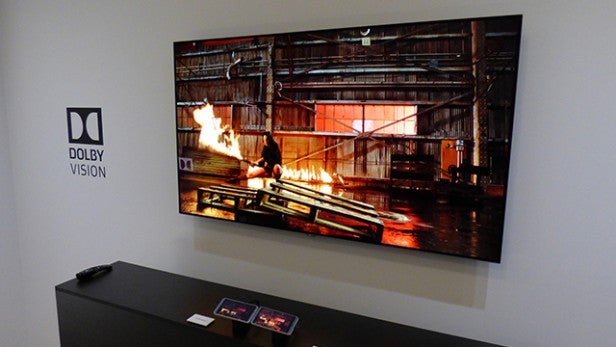
At Dolby’s MWC booth, the company set up two LG G6 handsets alongside one another, in front of an OLED TV running Dolby Vision content. Both phones were running 1080p content, but one was running Blu-ray standard-dynamic-range footage, while the other showcased footage in Dolby Vision.
The idea was to demonstrate how close the mobile device could come to both replicating what the editor saw on the colour-grading monitor, and how little difference there was between the OLED TV and the G6 showing Dolby Vision footage.
I have to say that the phone in question and the monitor certainly seemed to be very close in terms of colour saturation. The G6 with Dolby Vision seemed to offer a warmer overall temperature. It’s very difficult to replicate the actual experience in photos, but here’s a look at the two phones side by side, with the Dolby Vision G6 on the right.
Related: LG G6 vs iPhone 7
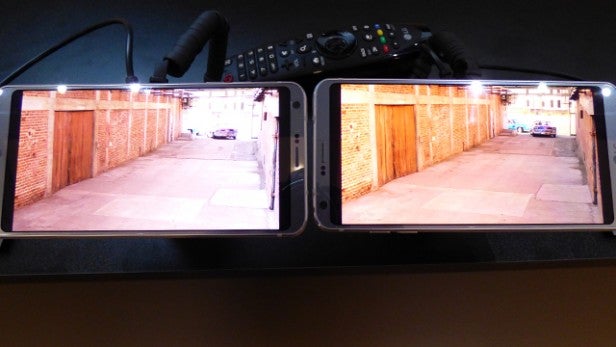
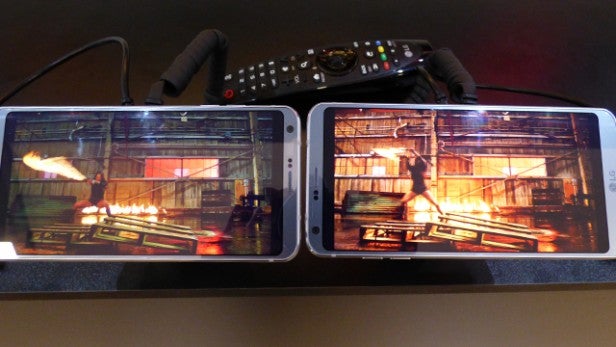
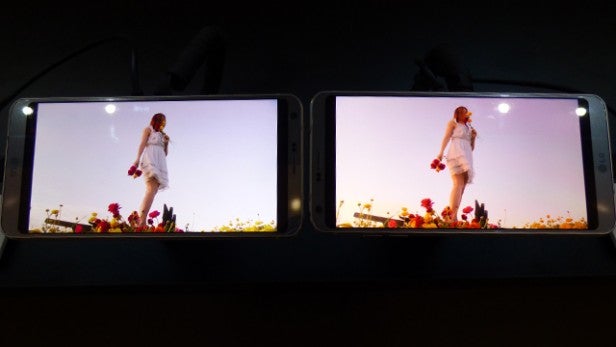
To be completely honest, from what I could tell during my brief time with the two phones, the SDR handset simply had a cooler colour temperature than the Dolby Vision model. There’s no doubt the Dolby Vision G6 was more vibrant, but in some cases the colour saturation seemed to actually work as a disadvantage.
Take this example. Here, on the left, the more restrained colours reveal greater detail on the flower than on the Dolby Vision display:
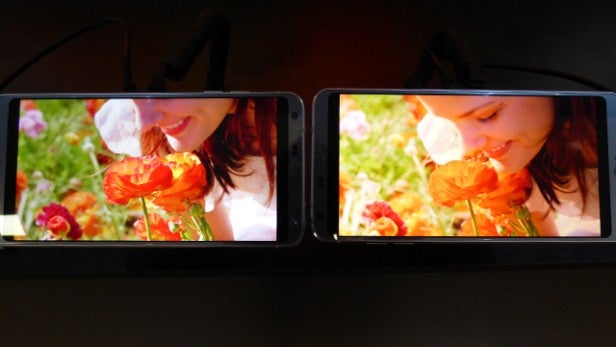
Again, the photo can’t really do justice to either screen, but it’s possible to see here how the warmer colours on the Dolby Vision G6 (on the right) actually drown out some of the nuances on the petals. Considering Dolby Vision uses 12-bit colour, which equates to an impressive 68 billion colours, it seems odd that this should be the case.
Of course, the LG G6 simply isn’t capable of reproducing all the colours in the Rec 2020 colour gamut – the standard used by Dolby Vision. This colour gamut includes 67% of the colours viewers are capable of registering, while the sRGB standard, which most phones don’t quite manage to cover, only includes 34%. (It’s not yet clear what the LG G6’s colour-reproduction capabilities are, but it should cover most of the sRGB standard.)
Even so, the Dolby Vision phone seemingly reproducing lower colour contrast than the SDR phone remains a lingering concern.
Related: What is HDR?
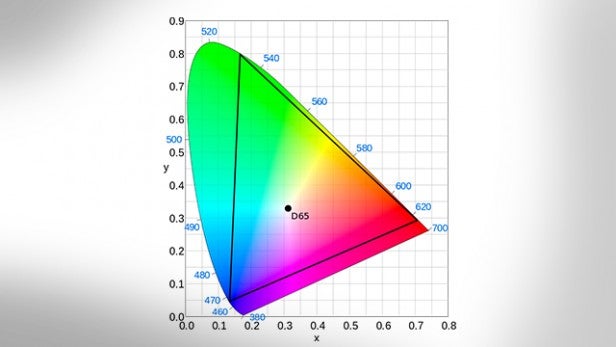 The Rec 2020 colour gamut shown within the triangle
The Rec 2020 colour gamut shown within the triangle
Also, Dolby’s intent with Dolby Vision is to provide an image as close to reference monitor quality as possible, so it could be that the colour grader in this instance actually wanted to reduce the contrast between the colours in the image above.
As Fink explained: “Fundamentally I can show you the same image on a $100 device, and on a $10,000 device. The $10,000 device will have a better-looking image, but the colours are fundamentally the same colours.”
It should also be noted that a big part of Dolby’s effort is to preserve skin tones across displays, and in the above example, the skin tone of the woman’s face on the Dolby Vision phone is arguably more natural than the alternative.
Beyond image quality
But there’s more to it than just colour depth and detail. Dolby Vision, being a paid-for option rather than a widespread standard as with HDR10, provides that all-important metadata level, which packs a bunch of extra information into the coding to enable devices to adapt to each frame dynamically. It’s this that allows for that preservation of skin tones, and it’s here that the technology has a distinct advantage when it comes to mobile.
As Fink explained: “Because we control the whole process basically from camera to display we can insert information into the video that allows us to control the playback of the video. So not only do you get the consistent colour, skin tones look natural, etc, but we also have information that allows us to control the backlight.”
This ability to actually embed commands that dynamically control the phone’s backlight during playback means Dolby’s standard has an energy-efficiency advantage over HDR10. Though, for consumers, you’re not likely to notice all that much difference in battery life considering the paucity of Dolby Vision content out there and the overall time you spend watching Netflix or Amazon shows on your phone.
Related: What is Ultra HD Premium?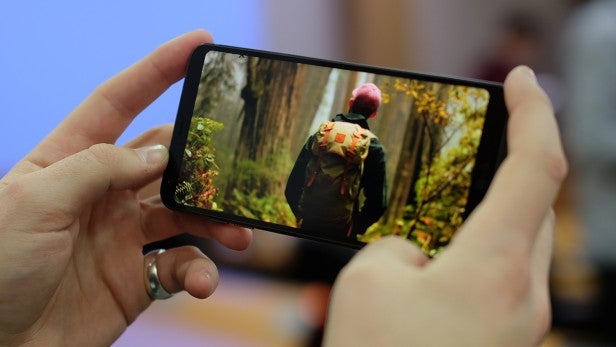 The LG G6 with its 5.7-inch 18:9 display
The LG G6 with its 5.7-inch 18:9 display
Fink continued: “So on this phone [the G6], I actually consume 15% less power when I playback Dolby Vision compared to standard dynamic range because, based on the content, I can dial up and down the backlight in a very adaptive manner. So you get some power saving by doing it.
“Another benefit of the technology on the phone is that it’s actually pretty resilient to changes in the ambient light. So with the TV, if the ambient light is too high, you actually have to lift the darks, etc. The mobile phones are actually much more resistant.”
Beyond the claim that Dolby Vision offers more natural colours then, there’s a whole range of benefits to bringing a technology, originally designed for cinemas, to mobile – and most of that comes down to the extra layer of metadata that allows for these dynamic changes.
Adaptive technology
With all these extra capabilities then, new LG G6 owners looking forward to streaming on the go might be concerned that Dolby’s technology is perfectly poised to push them over their data limit. After all, if you watch Dolby Vision-enabled content, the technology automatically kicks in without asking for your consent.
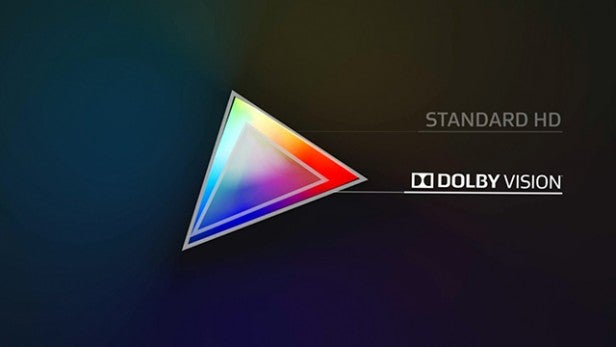
Happily, Dolby promises you won’t be getting billed for going over your data-usage limit. Fink claims Dolby Vision consumes 10% less bandwidth than HDR10, a statistic he says is based on an MPEG-backed university study.
He continued: “This is very important for mobile phone OEMs because their biggest customers are carriers, and they’re very concerned about bitrates. And another benefit is for consumers.
Variable bitrates have been used by companies such as Netflix and Amazon for some time now – it’s why Netflix content sometimes dips in quality, to account for changes in your DSL capabilities and maintain playback even when your connection isn’t at its strongest.
Dolby’s making use of that same concept. The phones used during the comparison at MWC were running on 6Mbps connections – the top tier in bitrate. Netflix and Amazon will start showing video on connections that use just a few hundred Kbps, so if you can get even a fairly tenuous connection set up, you can start seeing video.
This adaptive bitrate streaming applies to Dolby’s own technology, too. As Fink was keen to stress during the presentation: “there’s no difference with Dolby Vision.”
Put simply, Dolby Vision will tailor the amount of metadata it sends to the phone based on the strength of your connection – scaling the image-enhancement data in line with the streaming service you’re using.
This adaptive capability is also the reason Dolby can offer further advantages over HDR10. Of course, the Dolby Vision standard was developed for cinema initially, which means it is incredibly capable when it comes to image enhancement that goes far beyond the capacity of most phones. For example, Dolby Vision supports brightness of up to 10,000 nits. Even the brightest phones available will only manage to give you a good 700 nits.
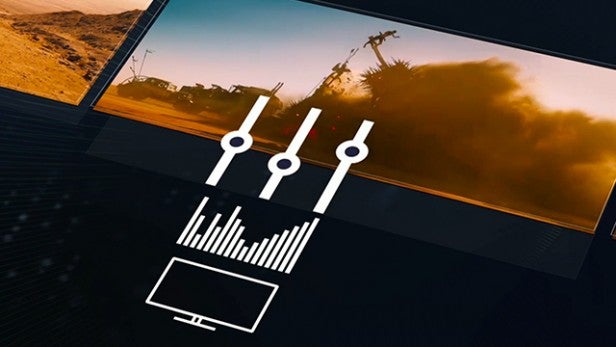
But Fink laid out how the metadata can be interpreted and adapted for mobile screens that might not have all the hardware capabilities required for a full Dolby Vision experience: “We know what the brightness range of the current scene is, what the maximum luminance, minimum luminance, and mid tones are. Then we use that information on the playback side. So we created this content at 4000 nits. Nobody has a 4000-nit mobile device or TV… With this metadata we can actually map it into the dynamic range of the playback device, and preserve, for instance, the mid tones.”
Whereas the HDR label typically tells you whether a device has met a certain standard for brightness and colour reproduction, Dolby Vision technology in a device means the content will be adapted for that device’s display to produce the best image possible. As Fink explained: “Dolby Vision is pretty resolution agnostic…
But what sets Dolby apart in the mobile market is that, thanks to the adaptive nature of the metadata element, the better your connection, the better those pixels will start to look. Or rather, the closer to the colour on the reference monitor they’ll get.
The future
LG’s choice to adopt Dolby Vision is, I can say, a welcome addition, and certainly more than a marketing gimmick. To be sure, a large part of it is marketing, but there are genuine advantages to the technology on mobile.
At this point, however, though there’s a growing amount of Dolby Vision content available, there’s still very little choice relative to the ever-increasing mounds of SDR films and TV shows out there. So if you do go and pick up the G6 on day one, don’t expect to be drowning in a sea of glorious Dolby Vision-enabled content.
But there’s definitely scope for the technology to grow, both in terms of content and hardware support, and Dolby is expecting more companies to integrate Dolby Vision in the near future.
 Mass Effect Andromeda will support Dolby Vision
Mass Effect Andromeda will support Dolby Vision
“Fundamentally the technology that is in [the G6] can be deployed in a lot of different mobile devices and we expect that a lot of OEMs and consumers and services will see the benefit and launch their devices,” said Fink. “I can’t make any announcement right now when we will do the next one, but I expect that we will be in a position to do this pretty soon,”
“The implementation we have here doesn’t have any specific hardware requirements, it’s actually done in software. So it’s a pretty portable implementation.”
On the content side, Dolby Vision will be coming to the gaming market with Mass Effect Andromeda, which launches on PS4, Xbox One and PC on March 21. Netflix, meanwhile offers Daredevil, Jessica Jones, Luke Cage, Marco Polo, and several other titles in Dolby Vision, while Amazon has its own range of Dolby Vision content. Original shows such as Bosch support the format, while US customers can stream films such as The Smurfs 2, Men in Black 3, Salt, Fury, Pineapple Express, and Elysium in Dolby Vision.
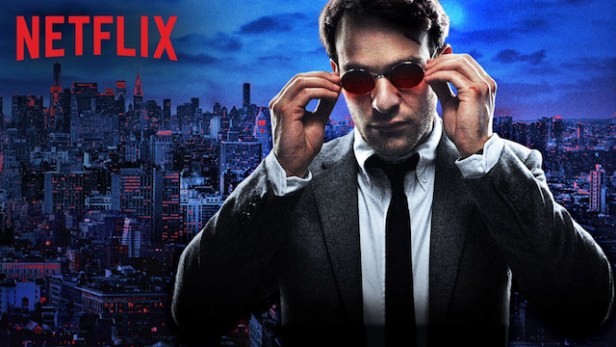 Daredevil is currently available in Dolby Vision on Netflix
Daredevil is currently available in Dolby Vision on Netflix
Fink continues: “We are still in the early days of rolling this out on a massive scale. The first Dolby Vision TV came to market 15 months ago. It was a $7000 device. Within the time span of 15 months, we were able to sign up more than 10 TV OEMs. We are in TVs you can buy in the US now for $500 to $600.
“We work with many distributors now. And we are also branching out into devices that are connected to TVs. So at CES we announced three different Blu-ray players that will support Dolby Vision. The first ones will be in the market soon. Then there’s digital mini adapters. We are in the Chromecast Ultra. And then, there’s of course, mobile.”
Whether Dolby Vision will take off in that mobile sector remains to be seen. Companies will have to sign up to use the technology in their products, and if that doesn’t happen, Dolby’s promise to provide a ‘consistent experience across devices’ will be largely undermined. Samsung has already made a point of not adopting Dolby Vision in its TVs, and there’s likely to be some similar issues in the mobile market.
But there are undoubtedly advantages to Dolby Vision on mobile, and it will be interesting to see whether those advantages are enough to translate to widespread adoption. Maybe Dolby can always hold a press conference where it trots out Italian cinematographers to convince us all.
Are you convinced by Dolby Vision on mobile? Let us know in the comments.

